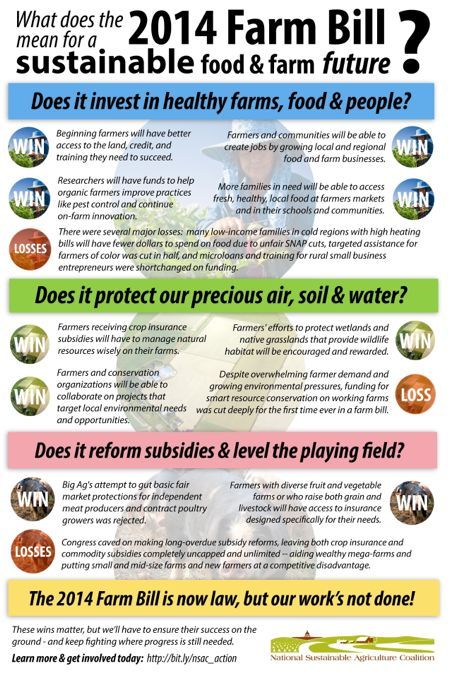In the US, the Farm Bill is the primary agricultural and food policy tool of the federal government, and includes legislation on a wide swath of food-related items, including food assistance benefits and subsidies for corporate farmers growing commodity crops. The bill is reviewed, debated and passed every five years or so. First created during the Great Depression to give assistance to farmers struggling financially from low prices caused by crop excess, the bill allowed farmers to receive government payment for not growing food, allowed the government to buy excess grain from farmers, and included a nutrition program.
The recently passed 2014 Farm Bill is a mixed bag. The five year bill is worth nearly $1 trillion and includes funds for programs like nutrition, farmer insurances, agricultural research, commodity subsidies and conservation. 79% of the Bill funds the SNAP Program (food stamps and nutrition education) and of the 21% “other” part of the pie, 68% funds commodities and crop insurance.
Bottom line: The 2014 Farm Bill continues to reward commodity farmers and large agricultural entities for planting crops such as soy and corn, whether it is needed or not and low-income families will have fewer SNAP dollars to purchase much-needed nutritious food. For now, we will focus on the $501 million investment in local and regional food systems programs--a real benefit to farmers growing for local communities nation-wide.
To read more in-depth coverage of the Farm Bill passage, we recommend these links:
The Sustainable Agriculture Blog

